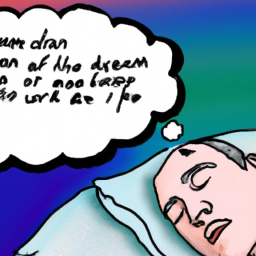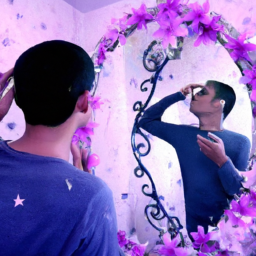Lucid Dreaming Techniques
Why Can’t I Move In My Dreams
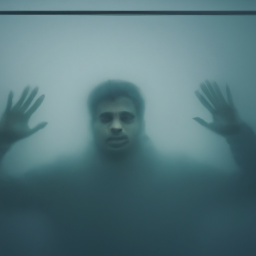
Have you ever found yourself struggling to move in a dream, but realizing your body is entirely immobilized? I certainly have. It’s an alarming and bewildering experience, making me question why I’m unable to manage my own actions within the dream realm.
In this article, I aim to explore the phenomenon of sleep paralysis and how it relates to our ability to move in our dreams. Sleep paralysis occurs when the body is in a state of sleep, but the mind is still partially awake. During this state, the body experiences a temporary loss of muscle control, which can result in feelings of paralysis.
This can happen during both the onset of sleep and upon waking up, and can last anywhere from a few seconds to several minutes. While sleep paralysis can be a scary experience, understanding what’s happening in our bodies can help us cope with it and even take control of our dreams through lucid dreaming.
So, let’s dive into the world of sleep paralysis and explore why we can’t move in our dreams.
Key Takeaways
- Sleep paralysis is a common condition where the body is temporarily unable to move during the transition between sleep and wakefulness.
- It is triggered by factors such as stress, sleep deprivation, and changes in sleep patterns and is often accompanied by hallucinations and feeling of suffocation.
- Relaxation techniques like deep breathing or meditation can help calm the body and mind before bed, and changing sleep habits may be helpful.
- Lucid dreaming is an exciting way to explore the subconscious mind and take control of dreams, and techniques such as reality checks, visualization, and dream journaling can help achieve it.
Understanding Sleep Paralysis
Can’t move in your dreams? It could be due to sleep paralysis, a common condition where the body is temporarily unable to move during the transition between sleep and wakefulness. This happens when the brain is still in a sleep state while the body is already awake.
During this time, the body is in a state of muscle atonia, which is a normal part of the sleep cycle to prevent the body from acting out dreams. However, when sleep paralysis occurs, the body remains in this state of atonia even after waking up, leading to the feeling of being immobilized.
Sleep paralysis can be a frightening experience, often accompanied by hallucinations and a feeling of suffocation. Some people report seeing or hearing things that aren’t there, such as ghosts or intruders. Others feel a pressure on their chest or a sensation of being strangled.
The experience can last anywhere from a few seconds to several minutes, and can be triggered by factors such as stress, sleep deprivation, and changes in sleep patterns. Despite its unsettling nature, sleep paralysis isn’t considered harmful and there are ways to manage and reduce its occurrence.
The Experience of Sleep Paralysis
Sometimes when I’m sleeping, my mind becomes aware of my body being paralyzed. It’s a strange sensation – I’ll try to move my arms or legs, but they won’t budge.
At first, I used to panic and try to force my way out of it, but that only made it worse. I’d feel like I was suffocating, like I couldn’t breathe. It was terrifying.
Over time, I’ve learned that this is a common experience called sleep paralysis. It happens when your body is in a state of deep relaxation during REM sleep, but your mind is still partially awake. It can be caused by things like stress, sleep deprivation, or irregular sleep patterns.
Learning about what causes sleep paralysis has helped me cope with it better, and I’ve found some techniques that make it less frightening.
Coping with Sleep Paralysis
So, if you’re like me and experience sleep paralysis, you may be wondering what you can do to cope with it. Luckily, there are a few things you can try.
First, relaxation techniques like deep breathing or meditation can help calm your body and mind before bed.
Second, changing your sleep habits, such as avoiding caffeine or establishing a consistent sleep schedule, may also be helpful.
And finally, if your sleep paralysis is causing significant distress or interfering with your daily life, it may be worth seeking professional help from a therapist or sleep specialist.
Relaxation Techniques
By taking deep breaths and imagining myself floating on a cloud, I can ease into a state of relaxation that may increase the likelihood of moving in my dreams. This relaxation technique involves finding a quiet, comfortable place to lie down and focusing on my breath.
As I inhale deeply, I imagine a white, fluffy cloud beneath me, supporting my body and carrying me away from the stresses of the day. Next, I exhale slowly, releasing any tension or negative thoughts from my mind. I continue this pattern of deep, intentional breathing, visualizing myself floating higher and higher on the cloud.
As my body becomes more relaxed, I may begin to feel a sense of weightlessness or even a slight tingling sensation. With practice, this technique can help me achieve a deeper state of relaxation, leading to more vivid dreams and a greater sense of control over my movements while sleeping.
Changing sleep habits can also be helpful in achieving this goal.
Changing Sleep Habits
To improve my chances of experiencing vivid dreams and greater control over my movements while sleeping, I need to adjust my sleep habits. Here are some habits I can change:
- Going to bed and waking up at the same time every day
- Avoiding caffeine and alcohol before bedtime
- Creating a relaxing bedtime routine, such as reading or taking a warm bath
- Keeping my bedroom cool, dark, and quiet
By making these changes, I can increase the likelihood of having more vivid dreams and potentially being able to move in them. However, if adjusting my sleep habits doesn’t lead to the desired results, seeking professional help may be the next step.
Seeking Professional Help
If you’re struggling to achieve a satisfying slumber and need assistance, consider seeking professional help. A sleep specialist can help diagnose any underlying conditions or habits that may be preventing you from moving in your dreams. They can also provide guidance on healthy sleep habits and recommend lifestyle changes to improve your overall sleep quality.
In addition to seeking professional help, practicing lucid dreaming techniques may also be beneficial. Lucid dreaming involves becoming aware that you’re dreaming while you’re still in the dream state. This can allow you to take control of your dreams and move freely within them.
Lucid Dreaming
Have you ever experienced lucid dreaming, where you are able to control and manipulate your dreams? It’s an incredible experience that allows you to be fully aware that you are dreaming and take control of the dream’s narrative. One way to achieve lucid dreaming is through reality checks, where you check if you are dreaming by looking at your hands, trying to push your finger through your hand, or asking yourself if you are dreaming throughout the day. This practice can help you become self-aware in your dreams and begin to control them.
Another way to achieve lucid dreaming is through the Wake Back to Bed (WBTB) method. This involves waking up after 4-6 hours of sleep, staying up for 30-60 minutes, and then going back to bed. This method increases your chances of having a lucid dream as you will be more aware during the REM stage of sleep where dreams occur. Here is a table that summarizes some techniques to help achieve lucid dreaming:
| Technique | Description | Tips |
|---|---|---|
| Reality checks | Checking if you are dreaming | Do them regularly throughout the day |
| Wake Back to Bed (WBTB) | Waking up and going back to bed | Set an alarm for 4-6 hours after falling asleep |
| MILD | Mnemonic Induction of Lucid Dreams | Repeat a phrase like "I will have a lucid dream tonight"before falling asleep |
| Visualization | Imagining yourself becoming lucid | Visualize yourself becoming aware in your dreams |
| Dream journaling | Writing down your dreams | Helps you remember your dreams and identify patterns |
Lucid dreaming can be a fun and exciting way to explore your subconscious mind and take control of your dreams. Give some of these techniques a try and see if you can achieve the incredible experience of lucid dreaming.
Frequently Asked Questions
How does sleep paralysis affect people with different sleep disorders?
Sleep paralysis can be terrifying. It feels like being held down, unable to move or speak. Those with sleep disorders may experience it more frequently. Seeking medical advice can help manage the effects.
Can medication or therapy help with sleep paralysis?
Yes, medication and therapy can help with sleep paralysis. Medications such as antidepressants or benzodiazepines may be prescribed to regulate sleep patterns and reduce stress. Cognitive-behavioral therapy can also be effective in managing symptoms.
Is sleep paralysis more common in certain age groups or demographics?
Sleep paralysis is more common in young adults, with a higher prevalence in women. It can occur at any age, but tends to decrease as people get older. It’s like being trapped in a nightmare, unable to move or speak.
Can sleep paralysis lead to physical health problems?
Sleep paralysis can lead to physical health problems such as fatigue, anxiety, and depression. It can also increase the risk of other sleep disorders and affect overall quality of life. Seeking treatment is important for managing these potential health issues.
Are there any natural remedies or techniques to prevent or reduce the occurrence of sleep paralysis?
I’ve found that practicing good sleep hygiene, like maintaining a consistent sleep schedule and avoiding caffeine and alcohol before bed, can reduce the occurrence of sleep paralysis. Relaxation techniques, such as deep breathing or meditation, may also be helpful.
Conclusion
So, there you have it – the reason why I can’t move in my dreams is because of sleep paralysis. It’s a common experience, but that doesn’t make it any less scary or frustrating.
However, by understanding what’s happening and finding ways to cope with it, I can still enjoy the wonderful world of dreams. As the adage goes, "knowledge is power."By learning about sleep paralysis and lucid dreaming, I can take control of my dreams and turn them into positive experiences.
So, next time I find myself unable to move in a dream, I’ll remember that it’s just a temporary state and focus on using my newfound knowledge to create a dream world that I can truly enjoy.
Eislyn is a gifted writer whose words weave enchanting narratives within the realm of dreams. With a profound love for storytelling and a deep curiosity about dreams, Eislyn’s articles transport readers into vivid dreamscapes.
Her writing style is both eloquent and thought-provoking, captivating readers’ imaginations and inspiring them to dive deeper into the mysteries of their own dreams. Eislyn’s exploration of dream symbolism and interpretation adds depth and nuance to our content, making it an absolute pleasure for dream enthusiasts to engage with.
Lucid Dreaming Techniques
How To Have Wet Lucid Dreams

I’ve forever been fascinated by the idea of **lucid dreaming**. Imagine having the power to explore and influence your dreams, encountering things far beyond imagination. It’s truly captivating. If you want to unlock this mysterious world, keep reading to find out more!
And when I learned about the possibility of having wet lucid dreams, where I could experience both the pleasure of sexual arousal and the power of lucidity, I was even more intrigued.
In this article, I will share with you my journey and experiences in exploring wet lucid dreams. I will provide tips and techniques on how to prepare for and induce wet lucid dreams, as well as maintain lucidity and experience orgasm.
I will also discuss the challenges that may arise and how to overcome them, as well as the importance of processing the experience and continuing the journey towards more profound and meaningful lucid dreaming experiences.
So, let’s dive in and explore the exciting world of wet lucid dreams together!
Key Takeaways
- Wet lucid dreams require relaxation and openness, as well as the ability to manage physical responses.
- Stabilizing techniques such as reality checks, engaging senses, and managing emotions can help maintain control during the experience.
- Incorporating sexual experiences can enhance the practice, but it is important to process the experience for personal growth and self-awareness.
- Overcoming challenges such as nightmares and discomfort can be achieved through confronting fears, relaxation exercises, creating a comfortable sleep environment, and focusing on positive aspects of the dream.
Understanding Lucid Dreaming
Let’s delve into the mind-bending world of lucid dreaming and figure out how to take control of our dreams!
Lucid dreaming is the ability to become aware during a dream and then take control of the dream itself. It’s like being a director of your own movie, where you get to create the plot, the setting, and the characters.
Many people report that lucid dreams feel incredibly real, and that they can be used to explore their deepest fears, desires, and fantasies. Plus, lucid dreaming can be used to improve creativity, problem-solving skills, and even to practice real-life tasks.
So, how can we start lucid dreaming? Let’s find out how to explore the fascinating world of wet lucid dreams!
Exploring Wet Lucid Dreams
Interestingly, research shows that around 80% of people have experienced physical sensations in their dreams, including touch and taste. This means that it’s possible to have a wet dream while lucid dreaming.
A wet lucid dream is when you become aware that you’re dreaming and can control your dream while also experiencing sexual pleasure and potentially having an orgasm. In order to have a wet lucid dream, it’s important to prepare both mentally and physically.
This can include setting an intention before going to sleep, practicing relaxation techniques, and even incorporating physical stimulation during the dream. By preparing beforehand and being aware of your dream state, you can potentially experience a wet lucid dream and explore this unique and exciting aspect of dreaming.
Preparing for Wet Lucid Dreams
To prepare for experiencing sexual pleasure and potentially having an orgasm in your dreams, you should focus on setting an intention before going to sleep and practicing relaxation techniques.
Firstly, set a clear and specific intention for what you want to experience in your wet lucid dream, whether it’s exploring your sexuality, having a particular sexual encounter, or simply enjoying the sensation of being wet. This will help your subconscious mind to focus on creating the experience you desire.
Secondly, practice relaxation techniques such as deep breathing, progressive muscle relaxation, or visualization to calm your mind and body before falling asleep. This will help you to enter a state of deep relaxation, which is conducive to having lucid dreams and experiencing sexual pleasure in your dreams.
Remember that wet lucid dreams require a certain level of relaxation and openness, so it’s important to let go of any expectations or judgments and simply allow yourself to surrender to the experience.
Now that you know how to prepare for wet lucid dreams, let’s move on to the next section about inducing lucid dreams.
Inducing Lucid Dreams
Achieving lucidity in your dreams is a skill that can be developed with practice and patience. There are several techniques that can help induce lucid dreams, and finding the right one for you may take some trial and error. One popular method is the reality check technique, where you ask yourself throughout the day if you are dreaming, and perform a simple reality check like trying to push your finger through your hand. Eventually, this habit will carry over into your dreams and you will perform the reality check, realizing that you are dreaming.
Another technique is the wake-back-to-bed method, where you set an alarm for 4-6 hours after going to bed, wake up, and stay awake for 30-60 minutes before going back to sleep. During this time, you can do activities like reading about lucid dreaming to increase your chances of having a lucid dream. Additionally, practicing relaxation techniques like meditation and visualization can help you enter a lucid dream state. It’s important to remember that everyone’s experiences with lucid dreaming are unique, so don’t get discouraged if it takes some time to achieve your first wet lucid dream.
Transitioning into the next section, maintaining lucidity is just as important as inducing it.
Maintaining Lucidity
Maintaining lucidity in a dream can be a difficult task, but it’s crucial if you want to fully explore the dream world and make the most of your lucid experience.
One of the key ways to maintain lucidity is by stabilizing the dream, which involves grounding yourself in the dream environment and preventing it from fading away.
Additionally, enhancing control over the dream and managing your emotions can also help you maintain your lucidity and stay in control of your dream experience.
Stabilizing the Dream
When you’re in a wet lucid dream, it can be challenging to stabilize the dream for more extended periods. But did you know that a study found that practicing reality checks during the day can increase the length and stability of lucid dreams?
This technique involves questioning your reality throughout the day and testing whether you are awake or dreaming. Once you’re in a wet lucid dream, you can continue performing reality checks to maintain your awareness and control over the dream.
Aside from reality checks, there are other ways to stabilize your wet lucid dream. Firstly, try to focus your attention on the dream environment instead of getting too caught up in your thoughts or emotions. Secondly, engage with your senses by touching objects, smelling flowers, or tasting food in the dream. Lastly, spinning your body or rubbing your hands together can help ground you in the dream and prevent you from waking up.
With these techniques, you can improve your chances of experiencing a more stable and longer-lasting wet lucid dream, giving you more time to explore and experiment. Moving on to enhancing control of your wet lucid dream, there are other techniques that you can use to take your dream experience to the next level.
Enhancing Control
To truly command your dream world, it’s essential to master the art of controlling your surroundings. When you become lucid in a dream, it’s common to feel overwhelmed or excited and lose control.
To prevent this from happening, try to stay calm and focused. Take a moment to observe your surroundings and determine what you want to do next. Once you have a plan in mind, use your mental intention to bring it to life.
For example, if you want to fly, imagine yourself soaring through the air and feel the wind rushing past your face. With practice, you’ll be able to manipulate your dream environment to suit your desires.
However, it’s important to remember that controlling your dreams doesn’t mean controlling every aspect of your experience. Emotions can be unpredictable and can affect the content of your dreams.
Managing your emotions can help you stay in control of your dream and prevent unpleasant experiences. If you feel overwhelmed or frightened, try to remind yourself that you’re in a dream and that you have the power to change your situation.
Take deep breaths and focus on positive thoughts to help shift your emotions. By developing emotional self-awareness, you can create a more enjoyable and fulfilling lucid dreaming experience.
Managing Emotions
Emotional self-awareness is key to creating a positive and fulfilling lucid dreaming experience, as it allows you to manage your emotions and prevent unpleasant experiences. When you become lucid in your dreams, it’s easy to get carried away by strong emotions such as excitement or fear, which can quickly destabilize the dream and cause you to wake up. Therefore, it’s important to stay grounded and maintain a sense of calmness and control, especially when encountering challenging situations.
To better manage your emotions during lucid dreaming, it’s helpful to create a simple emotional management plan. Here’s a table that can serve as a starting point:
| Emotion | Strategy |
|---|---|
| Fear | Take deep breaths and remind yourself that it’s just a dream. |
| Anxiety | Focus on a relaxing image or mantra. |
| Excitement | Take a moment to stabilize the dream before engaging in any activities. |
By having a plan in place, you’ll be better equipped to handle any emotional challenges that arise during lucid dreaming. With practice, you’ll also become more adept at recognizing and regulating your emotions in the moment, which will lead to more enjoyable and rewarding lucid dreaming experiences. Now, let’s explore how incorporating sexual experiences can enhance your lucid dreaming practice.
Incorporating Sexual Experiences
When it comes to incorporating sexual experiences into my lucid dreams, I like to explore my fantasies in a safe and controlled environment. I communicate with dream characters to set boundaries and understand their desires. Experimenting with different techniques, such as changing the scenery or altering my own appearance, can also add an extra layer of excitement to my sexual lucid dreams.
Exploring Your Fantasies
Get creative and let your mind wander to fulfill all of your wildest dreams and desires, whether it’s exploring a mystical land or indulging in a steamy rendezvous with a celebrity crush. One way to explore your fantasies is to write them down in a dream journal. Write out a detailed description of what you want to experience in your lucid dream, including all of the sensory details like smells, sounds, and textures. As you fall asleep, focus on this written description and visualize yourself experiencing it. This technique can help make your fantasies more vivid and immersive.
Another way to explore your fantasies is to use a technique called “incubation.†Before going to bed, spend some time thinking about the fantasy you want to experience in your lucid dream. Imagine yourself in the situation and how it would feel to be there. Then, as you fall asleep, repeat a mantra or affirmation to yourself that reinforces the idea of experiencing your fantasy in your lucid dream. This can help program your mind to focus on your desired experience while you sleep. With these techniques, you can start to explore your deepest desires in your lucid dreams and have a truly unforgettable experience.
Now, let’s move on to the next section about communicating with dream characters.
Communicating with Dream Characters
Engage with the characters in your dreams like never before by learning how to effectively communicate with them. When you become lucid in a dream, take the time to ask questions and have conversations with the characters you encounter. Don’t be afraid to get creative with your questions and topics of discussion.
The more you engage with these characters, the more realistic and vivid your dreams will become.
Communicating with dream characters can also help you gain insight into your subconscious mind. The way they respond and interact with you can reveal hidden emotions and desires that you may not have been aware of in your waking life.
As you continue to practice lucid dreaming and communication with your dream characters, you may even start to recognize recurring characters or themes in your dreams. This can give you a deeper understanding of yourself and your inner thoughts and feelings.
Experimenting with different techniques can help you take your lucid dreaming and communication skills to the next level.
Experimenting with Different Techniques
By trying out various methods, you can elevate your skills in lucid dreaming and communication with dream characters, adding a new dimension to your dream world.
Experimenting with different techniques can help you achieve the wet dream of your dreams. Some people find that reality checks, such as counting fingers or looking at a clock, can help them become lucid in their dreams. Others use dream journals to increase their dream recall and gain more control over their dreams.
One technique that may help with having wet lucid dreams is visualization. Before going to bed, try imagining a scenario in which you’re experiencing the wet dream you desire. Focus on the sensations and emotions associated with the experience. This can help your mind become more attuned to the idea of having a wet dream and make it more likely to happen in your dream.
With these techniques, you may be able to achieve the wet dream of your desires without even trying.
Experiencing Orgasm
I’m excited to talk about experiencing orgasm during lucid dreaming. It’s a unique and thrilling sensation that takes some practice to achieve.
In this discussion, we’ll cover techniques for achieving orgasm, managing the physical response, and maintaining lucidity after orgasm.
Techniques for Achieving Orgasm
Let’s explore some techniques to achieve an orgasm during your wet lucid dream. One technique is to focus on the sensations in your dream body, paying attention to the pleasure that comes with each touch or movement. This can be done by exploring your dream environment, engaging in sexual activity with a dream character, or simply tuning in to the physical sensations of your dream body.
By focusing on these sensations and allowing yourself to fully immerse in the experience, you can increase the likelihood of experiencing orgasm.
Another technique is to use visualization and mental imagery to enhance the sexual experience in your dream. This can involve imagining erotic scenarios, visualizing a partner or partners, or even using fantasy to stimulate yourself.
By using mental imagery and visualization, you can create a more vivid and intense sexual experience in your dream, which can lead to a more powerful and satisfying orgasm. However, it’s important to remember to manage the physical response to these techniques in order to avoid waking up prematurely.
Managing the Physical Response
Achieving orgasm is a wonderful feeling that many people enjoy, but when it comes to having wet lucid dreams, it can be a bit of a challenge. However, there are techniques that can help you achieve this goal.
One of the most important things is to manage your physical response. When you start to feel the sensation of orgasm, you need to be able to control it and not let it completely take over.
To help you manage your physical response, here are three tips to keep in mind:
- Focus on your breathing – Take slow, deep breaths to help keep your body relaxed and avoid getting too excited too quickly.
- Change positions – If you feel like you’re getting too close to orgasm, try changing positions or slowing down to help prolong the experience.
- Use visualization techniques – Imagine yourself in a different setting or scenario to help distract your mind from the physical sensations and stay in control.
By following these tips, you can help increase your chances of having a wet lucid dream. However, once you’ve achieved orgasm, it’s important to maintain your lucidity. In the next section, we’ll explore some techniques for staying in control and keeping your dream going.
Maintaining Lucidity after Orgasm
To keep your dream going after experiencing orgasm, it’s important to maintain your lucidity by using specific techniques.
One technique is to focus on your surroundings and engage your senses. Take a moment to observe the details of your dream environment, such as the colors, textures, and sounds. Touch objects and surfaces to ground yourself in the dream world. Engaging your senses can help you stay present and prevent your mind from drifting away from the dream.
Another technique is to remind yourself of your intention to stay lucid. Repeat a mantra to yourself, such as "I’m dreaming, I’m in control,"to reinforce your awareness. It can also be helpful to visualize yourself staying in the dream, perhaps by imagining a rope or ladder that you can climb to stay in the dream world.
By using these techniques, you can maintain your lucidity and continue to explore your dream world even after experiencing orgasm.
Now, let’s move on to the next section and explore how to process the experience of a wet lucid dream.
Processing the Experience
After you’ve had a wet lucid dream, take some time to process the experience and reflect on any insights or emotions that arose during the dream. Here are some tips that’ve helped me:
-
Write down your dream as soon as you wake up. The details may fade quickly, so jotting down what happened can help you remember the experience more vividly.
-
Pay attention to any recurring themes or symbols in the dream. These may hold deeper meaning and can provide insight into your subconscious.
-
Consider the emotions you felt during the dream. Were you scared? Excited? Curious? Reflecting on these emotions can help you understand more about yourself and your desires.
-
Practice gratitude for the experience. Not everyone’s able to have lucid dreams, so take a moment to appreciate the special gift you’ve been given.
Reflecting on your wet lucid dream can be a powerful tool for personal growth and self-awareness. It’s not always easy to understand the messages our subconscious is trying to convey, but with practice and patience, we can begin to unlock the mysteries of our dreams.
As we explore the world of lucid dreaming, we may encounter challenges along the way. However, these obstacles can be overcome with persistence and dedication.
Overcoming Challenges
Dealing with nightmares, managing discomfort, and coping with disappointment are some of the challenges that we may encounter when attempting to have lucid dreams. Personally, I’ve experienced some scary and unpleasant dream scenarios, which can be quite distressing even when we know we’re dreaming.
Additionally, the physical sensations of being asleep and immobile for an extended period of time can be uncomfortable, especially if we’re not used to it.
Lastly, there may be instances where we fail to achieve our desired lucid dreaming goals, which can be disappointing and frustrating.
However, there are ways to overcome these challenges and continue to work towards our lucid dreaming aspirations.
Dealing with Nightmares
If you’re having nightmares while trying to have wet lucid dreams, don’t worry – there are ways to overcome them and still achieve your goal.
One technique is to confront the nightmare head-on. Instead of running away or trying to wake up, face the fear and try to change the outcome of the dream. This can be done by reminding yourself that you’re in control of the dream and can manipulate it to your advantage.
Another technique is to practice relaxation and visualization exercises before going to bed. This can help reduce anxiety and promote positive dream experiences.
In addition to these techniques, it’s important to create a comfortable sleep environment. Make sure your sleeping area is free of distractions and that you’re physically comfortable. You can also try incorporating calming scents or sounds into your bedtime routine.
By managing discomfort and creating a peaceful sleep environment, you can increase your chances of having wet lucid dreams without the interference of nightmares.
Managing Discomfort
I hope the tips on dealing with nightmares were helpful. Now, let’s talk about managing discomfort during wet lucid dreams. It’s important to remember that discomfort is a natural part of the experience, but there are ways to minimize it and still have a pleasurable experience.
One way to manage discomfort is to experiment with different sleep positions. Sleeping on your side or stomach may alleviate pressure on sensitive areas and reduce discomfort. Another way is to use lubrication, such as a water-based lubricant, to reduce friction and increase comfort. Additionally, practicing relaxation techniques before bed can help you remain calm and comfortable during the experience.
| Tip | Description | Example |
|---|---|---|
| Sleep position | Experiment with different positions to alleviate pressure on sensitive areas | Sleeping on your side or stomach |
| Lubrication | Use a water-based lubricant to reduce friction and increase comfort | KY Jelly |
| Relaxation techniques | Practice relaxation techniques before bed to remain calm and comfortable | Deep breathing exercises |
Now that we’ve covered managing discomfort, let’s move on to coping with disappointment in wet lucid dreams.
Coping with Disappointment
To cope with disappointment during your wet lucid dream experience, what can you do when things don’t go as planned?
First, try not to get too attached to a specific outcome. Instead, focus on the experience as a whole and be open to whatever happens. If you find yourself feeling disappointed, take a moment to acknowledge your emotions and then let them go. Remember that this is just one experience and there will be others.
Another way to cope with disappointment is to shift your focus to something positive. For example, if you were hoping to meet a certain person in your dream but it didn’t happen, focus on the other amazing things that did happen in the dream. Maybe you were able to fly or visit a beautiful location. By focusing on the positive aspects of the dream, you can still feel fulfilled and grateful for the experience.
As you continue the journey towards more wet lucid dreams, remember that each experience is unique and special in its own way.
Continuing the Journey
Keep practicing and experimenting with different techniques to maintain the level of lucidity in your wet dreams. It can be easy to get discouraged when you don’t have a successful lucid dream every night, but it’s important to remember that this is a journey and it takes time to master.
Here are some tips to help you continue on your path towards lucid dreaming success:
-
Keep a dream journal: Writing down your dreams every morning can help you remember them more vividly and increase your awareness of your dream state.
-
Reality checks: Make a habit of doing reality checks throughout the day to help you recognize when you’re dreaming.
-
Meditation: Practicing mindfulness meditation can improve your overall awareness and help you maintain focus during your lucid dream.
-
Experiment with different techniques: Don’t be afraid to try different methods to help you achieve lucidity. Some people find success with the Wake Back to Bed technique, while others prefer the MILD technique. Keep trying until you find what works best for you.
Remember, the key to having a wet lucid dream is to stay committed and keep practicing. With time and effort, you can achieve success and experience the exhilarating world of lucid dreaming.
Frequently Asked Questions
Can wet lucid dreams be harmful in any way?
I have researched and found no evidence to suggest that wet lucid dreams can be harmful in any way. In fact, they are a natural and healthy part of sexual expression and can provide a pleasurable experience.
Is it possible to have a wet lucid dream without any sexual experiences?
I was skeptical at first, but after research and experimentation, I found that wet lucid dreams can indeed be experienced without any sexual content. It’s all about controlling your thoughts and focusing on a different sensation.
How long does it take on average to induce a wet lucid dream?
On average, it takes me about a week of consistent reality checks and dream journaling to induce a wet lucid dream. It’s important to stay patient and keep practicing techniques to increase the likelihood of having one.
Are there any specific lucid dreaming techniques that are more effective for achieving wet lucid dreams?
Achieving wet lucid dreams requires a combination of techniques such as reality checks, dream journaling, and visualization. I swear by WILD technique, which may take longer, but the payoff is worth it!
Is it possible to have multiple wet lucid dreams in one night?
Yes, it is possible to have multiple wet lucid dreams in one night. However, this depends on various factors such as sleep quality, frequency of lucid dreams, and individual differences.
Conclusion
So there you have it, a guide on how to have wet lucid dreams. It’s important to remember that this is a personal journey and everyone’s experiences will vary. However, with practice and patience, anyone can master the art of lucid dreaming and even achieve a wet dream during the process.
One interesting statistic to note is that according to a study published in the Journal of Sex Research, approximately 83% of men and 37% of women have experienced a wet dream at some point in their lives. This emphasizes the idea that wet dreams are a natural and common occurrence, and should not be stigmatized or judged.
With a better understanding of lucid dreaming and the techniques discussed in this article, one can enhance their dream experiences and potentially even achieve a wet dream.
Happy dreaming!
Eislyn is a gifted writer whose words weave enchanting narratives within the realm of dreams. With a profound love for storytelling and a deep curiosity about dreams, Eislyn’s articles transport readers into vivid dreamscapes.
Her writing style is both eloquent and thought-provoking, captivating readers’ imaginations and inspiring them to dive deeper into the mysteries of their own dreams. Eislyn’s exploration of dream symbolism and interpretation adds depth and nuance to our content, making it an absolute pleasure for dream enthusiasts to engage with.
Lucid Dreaming Techniques
How To Have More Sexual Dreams

Have you ever woken up from a dream feeling aroused and wished you could have more of those dreams? You’re not alone. Many individuals have sexual dreams and long to have them more often.
The good news is that there are ways to increase the likelihood of having sexual dreams.
Firstly, it’s important to understand the science behind dreaming. Dreams occur during the REM (Rapid Eye Movement) stage of sleep and are believed to be linked with memory consolidation, problem-solving, and emotional regulation.
By creating the right sleep environment, keeping a dream journal, practicing lucid dreaming, incorporating erotic themes into your bedtime routine, exploring your sexual fantasies, using sleep aids and supplements or seeking professional help – all can help in increasing the chances of experiencing more sexual dreams.
So let’s dive deeper into these techniques and explore how we can enhance our dream life!
Key Takeaways
- Creating a comfortable and sensual sleep environment can promote sexual dreaming.
- Keeping a dream journal and practicing lucid dreaming techniques can help take control of dream outcomes.
- Experimenting with different approaches, such as incorporating erotic themes into bedtime routines or using sleep aids and natural remedies, can enhance sexual dream experiences.
- Seeking professional help to address psychological or emotional barriers to having sexual dreams can also be beneficial.
Understanding the Science of Dreaming
You’re probably wondering how you can have more sexual dreams, but first, let’s understand the science behind dreaming.
Dreams are an essential aspect of our lives and have been studied for centuries. Neurological processes play a significant role in the occurrence of dreams, especially during the Rapid Eye Movement (REM) phase of sleep.
During this phase, our brain is actively processing information from the day and consolidating it into memories. Dream interpretation techniques have also been developed to help us understand what our subconscious mind is trying to tell us through our dreams.
By understanding these scientific processes behind dreaming, we can begin to explore ways to enhance our dream experiences and potentially increase the occurrence of sexual dreams.
Now that we know about neurological processes and dream interpretation techniques involved in dreaming, let’s take a look at creating the right sleep environment. A comfortable sleep environment plays a crucial role in promoting deep and restful sleep.
Creating the Right Sleep Environment
When it comes to creating the right sleep environment for more sexual dreams, there are a few key things that I’ve found helpful.
Firstly, reducing distractions and disruptions is essential. This means minimizing noise, light, and other disturbances in the bedroom.
Additionally, incorporating sensual elements into your bedroom can help create a more conducive atmosphere for sexual dreaming. Soft lighting, comfortable bedding, and romantic décor can all contribute to a relaxing and sensual environment that encourages erotic dreams.
Reducing Distractions and Disruptions
By minimizing external stimuli like a soundproof room, you can sink into sleep as easily as a stone sinks into water.
Minimizing distractions and creating a soothing atmosphere in your bedroom is crucial to having sexual dreams. This means keeping electronics out of the room, avoiding loud noises, and making sure the temperature is comfortable.
Consider using blackout curtains or an eye mask to block out any outside light that might disturb your sleep. You could also try using earplugs or white noise machines to drown out any noises that might keep you awake. By doing so, you’ll create an environment that promotes deep relaxation and restful sleep.
Now that you’ve minimized disruptions in your bedroom, it’s time to focus on incorporating sensual elements into your sleeping space to further enhance your chances of having sexual dreams.
Incorporating Sensual Elements into Your Bedroom
To create a seductive atmosphere in your bedroom, add soft lighting and plush textures to your bedding. Introducing scented candles can also enhance the sensual experience. Choose scents that are known for their aphrodisiac properties, such as vanilla or jasmine. Place them strategically around the room, but be careful not to overwhelm the space with too many different scents.
Exploring different textures can also stimulate your senses and increase your chances of having sexual dreams. Invest in silky sheets, fluffy pillows, or even a faux fur throw blanket to create a variety of tactile sensations. You can also incorporate other sensory elements into your bedroom, such as playing soothing music or using essential oils in a diffuser.
By creating an environment that is both comfortable and arousing, you’re setting the stage for more vivid and erotic dreams. With these tips in mind, it’s time to start incorporating sensual elements into your bedroom for better dream experiences. But once you’ve created the perfect ambiance, how do you make sure those dreams stick? Keeping a dream journal can help you remember what happens during these nighttime adventures – read on to find out more!
Keeping a Dream Journal
If you want to have more sexual dreams, start keeping a dream journal and jot down all the vivid details as soon as you wake up. This will help you remember your dreams better and identify patterns in your subconscious desires.
Dream interpretation can be tricky, but keeping track of your dreams will give you insight into what your mind is trying to tell you.
Lucid dreaming techniques can also help increase the frequency of sexual dreams. By practicing lucid dreaming, you can become aware that you’re dreaming while still in the dream state and take control of the outcome.
You can create scenarios that involve sensual elements or even summon specific people or experiences from your waking life. With enough practice, lucid dreaming can become a powerful tool for exploring your sexuality in a safe and controlled environment without any inhibitions or consequences.
Practicing Lucid Dreaming
Keeping track of your dreams is a great way to start exploring the world of lucid dreaming. It allows you to recognize patterns in your subconscious and identify what triggers certain emotions or thoughts.
Once you have a good grasp on your dream journal, it’s time to take things up a notch by practicing lucid dreaming. Lucid dreaming is a state where you become aware that you are dreaming and can control the outcome of the dream. There are numerous benefits of lucid dreaming, such as improving problem-solving skills, reducing anxiety, and boosting creativity. However, achieving this state takes practice and patience.
Here are some tips for maintaining lucidity in dreams:
- Reality checks: Perform frequent reality checks during the day to train your brain to question whether you are awake or asleep.
- Dream cues: Look for specific signs within your dream that indicate that you are dreaming, such as distorted objects or flying.
- Stabilization techniques: Once you realize that you are in a dream state, focus on stabilizing the environment around you by touching objects or rubbing your hands together.
By incorporating these tips into your routine, you can increase your chances of having more sexual dreams and even experiencing them from a conscious perspective.
Speaking of which, let’s move onto the next section about incorporating erotic themes into our bedtime routine.
Incorporating Erotic Themes into Your Bedtime Routine
I’ve found that incorporating erotic themes into my bedtime routine has been a great way to enhance my dream life and overall well-being. Erotic visualization can have many benefits, such as reducing stress and anxiety, increasing intimacy in relationships, and promoting self-discovery.
There are several techniques I use to incorporate these themes, such as reading erotica before bed or practicing sensual meditation.
The Benefits of Erotic Visualization
To enhance your sexual dreams, try incorporating erotic visualization into your daily routine. Visualizing desires and sensual meditation techniques can help stimulate the mind and increase the likelihood of having more vivid and exciting sexual dreams.
Through visualization, you can tap into your subconscious desires and create a mental image of what turns you on. This technique involves focusing on specific images or scenarios that arouse you sexually while in a relaxed state. Sensual meditation techniques, such as deep breathing, muscle relaxation, and guided imagery, can also help prepare your mind for erotic visualization.
By incorporating these practices into your daily routine, you may find yourself experiencing more frequent and intense sexual dreams. As you explore the benefits of erotic visualization, there are various techniques for incorporating erotic themes that you can try. By experimenting with different approaches, such as reading erotica before bed or watching sexually stimulating movies, you can discover what works best for you in terms of enhancing your sexual dream experiences.
Techniques for Incorporating Erotic Themes
By experimenting with various forms of media that arouse you, such as erotic literature or provocative films, you can unlock new techniques for incorporating sensual imagery into your visualization practices.
When reading erotic literature, focus on the vivid descriptions and explore how they make you feel. Pay attention to the specific words and phrases that resonate with you and use them in your own visualizations.
Similarly, when watching provocative films, take note of the scenes or moments that arouse you and incorporate those images into your own fantasies.
Another technique for incorporating erotic themes into your visualizations is through mindful breathing techniques. By focusing on your breath and slowing it down, you can become more present in the moment and allow yourself to fully engage with your sexual fantasies.
Try taking deep breaths in through your nose and out through your mouth while imagining a sensual scenario. As you exhale, visualize yourself releasing any tension or stress from your body.
As we explore further into unlocking our subconscious desires by exploring our sexual fantasies…
Exploring Your Sexual Fantasies
Hey, you wanna have more sexual dreams? Well, why not let your imagination run wild and indulge in all those naughty fantasies you’ve been too afraid to admit?
Fantasy exploration is a powerful tool for increasing the likelihood of having erotic dreams. By exploring your sexual fantasies during waking hours, you’re effectively priming your mind to continue these thoughts during sleep.
To start exploring your sexual fantasies, try setting aside some time each day to fantasize. This could be while taking a shower, going for a walk, or even just before bed. Let yourself explore any desires or ideas that come up without judgment or shame.
The goal isn’t necessarily to act on these fantasies in real life, but rather to give your mind the freedom to explore and create new scenarios. With continued practice over time, you may find that these fantasies start seeping into your dream world as well.
Now that you’ve started exploring your innermost desires and laying the groundwork for more vivid dreams, it’s time to consider using sleep aids and supplements as another way of promoting erotic dreams.
Using Sleep Aids and Supplements
When it comes to enhancing my sleep and dreams, I’ve found that sleep aids and supplements can be incredibly helpful. From melatonin to valerian root, there are a variety of natural remedies that can help promote deeper, more restful sleep.
Additionally, some of these supplements have been shown to enhance dreams and increase dream recall, allowing me to explore my sexual fantasies even further.
The Role of Sleep Aids and Supplements
Boost your chances of having more sexual dreams by trying out sleep aids and supplements! While sleep aids and supplements can help promote better sleep, they may also influence the content of your dreams.
Here are some types of sleep aids and potential side effects of supplements that you might want to consider:
-
Types of Sleep Aids:
-
Melatonin: a hormone that regulates sleep-wake cycles
-
Valerian root: an herb used for anxiety and insomnia
-
Potential Side Effects of Supplements:
-
Stomach upset or nausea
-
Mood changes or irritability
It’s important to talk to your doctor before taking any new supplements, as they may interact with other medications or have adverse effects on your health. With the right guidance, however, incorporating these sleep aids and supplements into your routine could help you achieve more vivid and stimulating sexual dreams.
Now, if you’re looking for natural remedies for enhancing dreams without relying on medication, there are plenty of options available.
Natural Remedies for Enhancing Dreams
Sleep aids and supplements can be helpful in promoting deep and restful sleep, which is essential for having more vivid dreams. However, some people may prefer to use natural remedies instead of relying on medication.
Herbal remedies such as valerian root, chamomile tea, and passionflower can help reduce anxiety and promote relaxation before bed. These herbs have been used for centuries to aid with sleep and can also enhance the quality of your dreams.
Aromatherapy techniques are another natural way to improve dream recall and promote lucid dreaming. Essential oils like lavender, peppermint, and frankincense can be diffused or applied topically before bedtime to create a calming atmosphere that promotes deep relaxation. The scent of these oils can stimulate the limbic system in your brain, which is responsible for emotions and memories, leading to more vivid dreams.
If you feel like you’ve exhausted all natural options for enhancing your dreams but still feel unsatisfied with your dream life, seeking professional help may be the next step.
Seeking Professional Help
You absolutely need to consider seeking professional help if you want to have more sexual dreams. Professional guidance can help you work through any psychological or emotional barriers that may be blocking your ability to have sexual dreams.
A therapist can teach you therapy techniques, such as dream journaling and visualization exercises, that can increase your chances of having more vivid and sexually charged dreams.
Another benefit of seeking professional help is the opportunity to explore any underlying issues that may be impacting your sex life and overall well-being. This includes addressing past traumas, relationship problems, or self-esteem issues that may be affecting your ability to connect with your sexuality.
By working through these issues with a therapist, you can gain a better understanding of yourself and embrace your sensuality in a healthier way without feeling shame or guilt.
Embracing Your Sensuality
Embrace your sensuality by exploring new ways to connect with your desires and fantasies. Body positivity is a crucial aspect of this process. Learning to love and appreciate every inch of your body can help you feel more confident and comfortable in your skin, which can translate into a more fulfilling sex life.
Try practicing self-care rituals that involve touching and pampering yourself, like taking long baths or giving yourself a sensual massage. These activities can help you become more in tune with your body and its needs.
In addition to physical self-care, it’s essential to prioritize emotional self-care as well. This means being kind to yourself, practicing self-compassion, and allowing yourself to explore your desires without judgment or shame.
Sensual self-care could also include exploring erotic literature or pornography that aligns with your interests and fantasies. By embracing your sensuality in all its forms, you’ll be better equipped to have sexual dreams that reflect the depth of pleasure you’re capable of experiencing.
Frequently Asked Questions
Can sexual dreams affect your physical health?
Sexual dreams don’t typically affect physical health, but can enhance one’s sex life by exploring desires and creating arousal. The benefits of sexual fantasies include increased pleasure and intimacy with a partner.
Is it possible to control the content of your sexual dreams?
Yes, it’s possible to control the content of your sexual dreams through lucid dreaming techniques and dream journaling. With practice, you can become aware that you’re dreaming and guide the direction of your dreams, including sexual ones.
Can certain foods or drinks increase the likelihood of having sexual dreams?
Like a chef adding spices to a dish, arousal inducing foods and herbal supplements can add flavor to our sexual dreams. While scientific evidence is limited, some people report success with certain foods and supplements.
Is there a certain time of day that is better for inducing sexual dreams?
The best time for inducing sexual dreams is during the last few hours of sleep, when REM (rapid eye movement) cycles are longer. Nighttime routines and creating a comfortable sleep environment can also help promote vivid dreaming experiences.
Can practicing certain physical exercises or meditation techniques improve the quality of your sexual dreams?
With mindfulness practices and lucid dreaming techniques, I’ve improved my dream experiences. By focusing on breath and bodily sensations during the day, I’ve become more aware in my dreams, including sexual ones.
Conclusion
In conclusion, exploring the world of sexual dreams can be a fun and exciting journey. By understanding the science of dreaming, creating the right sleep environment, keeping a dream journal, practicing lucid dreaming, incorporating erotic themes into your bedtime routine, exploring your sexual fantasies, using sleep aids and supplements, seeking professional help, and embracing your sensuality, you can have more frequent and vivid sexual dreams.
As we delve deeper into our subconscious desires through our dreams, we may discover hidden aspects of ourselves that we never knew existed. Dreams are like keys to unlock the deepest corners of our minds. They provide us with an opportunity to explore our fantasies in a safe and private space.
So why not take advantage of this natural phenomenon? Allow yourself to embrace your sexuality and let your imagination run wild. Who knows what secrets you may uncover about yourself along the way!
Manda is the visionary Editor in Chief of Hello Lovely. With an unwavering passion for dreams, Manda ensures that our content is meticulously curated, informative, and engaging.
Their dedication to providing high-quality articles, guides, and resources is evident in the wealth of information available on our platform. Manda’s expertise in dream research, combined with their editorial prowess, helps shape Hello Lovely into a trusted source of dream-related knowledge. Their goal is to create a vibrant dream-centric community where individuals can explore, learn, and connect.
Lucid Dreaming Techniques
Unlocking the Power of Lucid Dreaming: Taking Control of Your Subconscious Adventures

Did you know that about one-third of our lives is spent sleeping? This means that by the time we reach 75 years old, we would have spent a total of 25 years sleeping.
But what happens during those hours we spend in dreamland? For some people, they can take control of their dreams and manipulate them to their will. This phenomenon is known as lucid dreaming, and it’s something that has fascinated scientists and everyday individuals alike for decades.
As someone who has always been curious about the mysteries of the mind, I’ve often wondered how one can control their dreams. Is it even possible? After conducting research and experimenting with various techniques myself, I am excited to share my findings on how one can achieve lucid dreaming and take control of their subconscious experiences.
From understanding the science behind it all to incorporating lucid dreaming into your daily life, this article will provide insight into this fascinating topic.
So sit back, relax, and let’s explore the world of lucid dreaming together.
Key Takeaways
- Keeping a dream journal and performing reality testing can increase the likelihood of experiencing lucid dreams
- The Wake-Back-To-Bed (WBTB) method and Wake-Induced Lucid Dreaming (WILD) techniques can also improve the chances of entering a lucid dream state
- Coping with sleep paralysis can involve focusing on breathing and attempting to move fingers or toes, as well as practicing meditation and mindfulness
- Developing a lucid dream routine and exploring new experiences can lead to personal growth and self-discovery, as well as greater control over both dreams and waking life.
Understanding the Science behind Lucid Dreaming
If you’re curious about how to take control of your dreams, understanding the science behind lucid dreaming is a great place to start!
Lucid dreaming occurs when you become aware that you are dreaming and can then manipulate the dream’s content. This state of consciousness has been scientifically proven through brain imaging studies.
Exploring benefits of lucid dreaming can include increased creativity, problem-solving skills, and self-awareness. By being able to manipulate the dream environment, individuals can also face their fears and gain a sense of control over their subconscious.
Additionally, debunking myths surrounding lucid dreaming is important as it allows individuals to approach it with a clear mind. Contrary to belief, lucid dreaming does not cause any physical harm or lead to sleep disorders.
Transitioning into keeping a dream journal is essential for those looking to improve their ability to lucid dream.
Keeping a Dream Journal
To keep track of your dreams, jot them down in a dream journal using pen and paper. It’s like capturing lightning in a bottle, preserving the fleeting memories before they slip away. Writing down your dreams immediately after waking up can help enhance dream recall, making it easier to remember details that may have been forgotten otherwise. Reflecting on emotions felt during the dream also helps to solidify those memories.
Here are some tips for keeping a successful dream journal:
- Keep your journal near your bed so you can easily access it upon waking up.
- Write down everything you remember about the dream, even if it seems insignificant.
- Use descriptive language to paint a vivid picture of the dream.
- Record any recurring themes or symbols.
- Take note of any strong emotions experienced during the dream.
Keeping a dream journal is an important step towards achieving lucid dreaming. By consistently recording your dreams and reflecting on their content, you’ll increase self-awareness and be better equipped to recognize when you’re dreaming. This brings us to our next topic: reality testing.
Reality Testing
Now onto reality testing, a crucial practice for achieving lucid dreaming. Reality testing techniques involve checking whether you are in a dream or reality by performing small actions or exercises throughout the day. This helps you to recognize the differences between dreams and reality, which can increase your chances of becoming aware that you are dreaming during sleep.
Here’s an example of a simple 2 column and 5 row table in markdown format that includes some reality testing techniques:
Technique Description Counting fingers Count your fingers on one hand. In a dream, you may find extra fingers or missing ones. Checking time Look at a clock twice; if the times don’t match up, it might be a dream. Pushing through objects Try pushing your hand through solid objects like walls or doors. If it goes through, it’s likely to be a dream. Reading text Read something twice; in dreams, text often changes when read again. Jumping ability Attempt to jump high enough to fly; this is impossible in waking life but easy in dreams.
The benefits of lucid dreaming for mental health are vast as they enable us to tap into our subconscious mind and explore our deepest desires and fears while being able to control them consciously. Lucid dreaming has been linked with reducing anxiety levels, improving emotional regulation, enhancing creativity and problem-solving skills.
Moving on from reality testing techniques, another effective method for inducing lucid dreams is using mnemonic induction of lucid dreams (MILD).
Using Mnemonic Induction of Lucid Dreams (MILD)
When it comes to controlling my dreams, I find that using the Mnemonic Induction of Lucid Dreams (MILD) technique is quite effective. This involves setting intentions before sleep by visualizing myself becoming lucid in a dream and practicing mantras such as “I’ll recognize when I’m dreaming.”
By consistently implementing these steps, I’ve found that my ability to become aware within my dreams has greatly improved.
Setting Intentions before Sleep
Before hitting the hay, it’s essential to establish a clear intention for your dreams if you want to control them. Setting intentions before sleep is a powerful technique that can help you achieve lucid dreaming more easily.
When we set an intention, we’re essentially telling our subconscious mind what we want to achieve. By doing this, we’re programming our brain to focus on the desired outcome during sleep.
There are numerous benefits of setting intentions before sleep. Firstly, it helps you stay focused and motivated towards achieving your goal of lucid dreaming. Secondly, it sets the tone for your dream environment and makes it easier for you to control your dreams.
However, there might be common obstacles to intention setting such as lack of clarity or distractions before bedtime. Therefore, it’s important to create a relaxing and distraction-free environment before bed and take some time for introspection so that you can set clear intentions for your dreams.
By setting intentions before sleep and consistently practicing this technique, you’ll start seeing results in no time! Next up is visualizing lucid dreaming, which is another effective way of controlling your dreams without having to rely on external tools or techniques like MILD.
Visualizing Lucid Dreaming
Visualizing lucid dreaming is an effective technique to master the art of controlling your dream state. Visualization techniques involve creating a clear and vivid image in your mind’s eye of what you want to experience during your dream. This helps you stay focused on your intention, enhances your dream recall ability, and increases the chances of having a lucid dream.
To make visualization effective for dream control strategies, here are two sub-lists that can help emphasize its importance:
-
Imagine yourself becoming aware that you’re dreaming:
-
Visualize yourself performing a reality check by looking at your hands or trying to push a finger through your hand.
-
See yourself realizing that this is not real life but just a dream and take control of the situation.
-
Visualize specific actions or objects:
-
Picture yourself flying, teleporting or walking through walls.
-
Try to imagine something unique like meeting an alien or visiting another planet.
By practicing these visualization techniques regularly before sleep, it becomes easier to induce lucid dreams and gain greater control over them. As we move into the next section about practicing mantras, I’ll explore how affirmations can further enhance our ability to achieve lucidity in our dreams.
Practicing Mantras
Practicing mantras can be a powerful tool in achieving lucid dreams. Repetition techniques, such as positive affirmations, allow for the reinforcement of certain ideas and goals during sleep. By incorporating mantras into your bedtime routine, you can increase awareness and intention, which are essential elements for achieving lucid dreams.
To practice mantras effectively, it’s important to choose phrases that resonate with your personal goals and intentions. Here is an example of a 2×3 table that provides some sample phrases to get you started:
Positive Affirmations Examples I am aware that I’m dreaming “I am conscious in my dreams”, “I control my dreams” My dream world is clear and vivid “My mind is sharp in my sleep”, “My senses are heightened” I have full control over my actions “I make decisions easily in my dreams”, “I do what I want when I want”
By repeating these phrases before bed or even during moments of wakefulness throughout the night, you can increase your chances of having a lucid dream. However, it’s important to remember that practicing mantras alone may not lead to immediate success. It’s recommended to combine this technique with other methods like the wake-back-to-bed (wbtb) technique.
With the help of positive affirmations and repetition techniques, you’re one step closer to experiencing lucid dreaming. But there are still more steps you can take towards mastering this skill. The next section will cover another effective technique called the wake-back-to-bed (wbtb) method.
Wake-Back-to-Bed (WBTB) Technique
Utilizing the WBTB technique, I can increase my likelihood of lucid dreaming by waking up after a few hours of sleep and then going back to bed with the intention of remaining aware during my dreams. This technique involves setting an alarm clock for 4-6 hours after falling asleep, getting up for 20-30 minutes, and then going back to bed.
During this time, I might use this opportunity to practice mantras or engage in other forms of meditation that’ve been proven to benefit sleep hygiene. Studies have shown that the WBTB technique is effective because it allows me to enter into a period of REM (rapid eye movement) sleep where lucid dreaming is more likely to occur.
By increasing my awareness during these periods, I’m able to take control of my dreams and steer them in any direction that I choose. This can lead to profound experiences and insights into myself and the world around me.
With this technique mastered, I can now move on to exploring wake-induced lucid dreaming (WILD) as a means of further enhancing my dream control abilities.
Wake-Induced Lucid Dreaming (WILD)
I’ve been exploring different lucid dreaming techniques and I’m excited to discuss Wake-Induced Lucid Dreaming (WILD).
WILD involves entering directly into a lucid dream from a waking state, maintaining awareness while falling asleep. It’s an advanced technique that requires overcoming sleep paralysis, but the potential for vivid and prolonged lucid dreams make it worth the effort.
Entering Directly into a Lucid Dream
Hey, did you know that there is another way to enter directly into a lucid dream? It’s called the Direct-Induction Lucid Dreaming (DILD) technique. Unlike WILD, DILD involves entering a dream state after falling asleep naturally, rather than through inducing relaxation and visualization techniques.
To increase your chances of having a DILD, it can be helpful to keep a dream journal and practice reality checks throughout the day. Reality checks involve asking yourself whether you are dreaming or awake, checking for inconsistencies in your surroundings or body sensations. By making this a habit during waking life, you are more likely to question your reality while in a dream state and become aware that you are dreaming. Check out the table below for more tips on how to improve your chances of having a DILD.
Tips for Improving Your Chances of Having a DILD Keep a dream journal Practice reality checks throughout the day Set an intention to have a lucid dream before falling asleep Incorporate mindfulness practices into daily routine Avoid consuming substances that interfere with sleep quality
Maintaining awareness while falling asleep can be tricky but is essential for successfully inducing lucid dreams using either WILD or DILD techniques. So let’s dive into some strategies on how to maintain awareness as we drift off into slumber.
Maintaining Awareness while Falling Asleep
To maintain awareness as I drift off to sleep and increase my chances of experiencing a lucid dream, I use mindfulness techniques and relaxation methods. One effective technique is to focus on my breath as I lie down in bed. By paying attention to the sensation of air moving in and out of my nose or mouth, I can bring myself into the present moment and calm my mind.
Another method is progressive muscle relaxation, which involves tensing and releasing each muscle group in turn while focusing on the sensation. This helps to release any physical tension that may be preventing me from falling asleep or entering a lucid dream state. Additionally, incorporating meditation or visualization practices during the day can help train my mind to be more aware and alert during sleep.
By using these mindfulness techniques and relaxation methods, I find it easier to maintain awareness as I fall asleep and enter into a lucid dream state. However, sometimes this transition can be challenging, especially when faced with sleep paralysis.
In the next section, we will explore ways to overcome this obstacle.
Overcoming Sleep Paralysis
Overcoming sleep paralysis can be a daunting task for many people who want to experience lucid dreams. Sleep paralysis occurs when your mind is awake but your body is still in the sleep stage, leaving you unable to move or speak. Coping mechanisms during sleep paralysis include focusing on breathing, attempting to move your fingers or toes, and continuing to relax until the episode passes.
One effective method for overcoming sleep paralysis is practicing meditation and mindfulness. By training your mind to remain calm and focused, you can prevent fear and panic from taking over during an episode of sleep paralysis. Additionally, meditation can improve overall sleep quality and increase the likelihood of experiencing lucid dreams. With consistent practice, individuals may find that they are better equipped to overcome episodes of sleep paralysis and enjoy more restful nights.
Practicing Meditation and Mindfulness
When you’re trying to control your dreams, practicing meditation and mindfulness can be a helpful tool. As someone who’s struggled with lucid dreaming in the past, I’ve found that incorporating mindfulness practices into my daily routine has helped me gain better control over my dreamscapes.
Here are a few benefits of mindfulness and some tips for beginners:
- Practicing mindfulness can help reduce stress and anxiety, which can lead to more restful sleep and better dream recall.
- Mindfulness can also help increase awareness of your thoughts and emotions, making it easier to recognize when you’re dreaming.
- Meditation can improve focus and concentration, which is important for maintaining lucidity in dreams.
Starting with short sessions (even just 5 minutes a day) can make it easier to develop a consistent practice. It’s important to approach meditation with an open mind and without judgment – don’t worry if your mind wanders at first!
By incorporating these tips into your daily routine, you may find that controlling your dreams becomes easier over time.
In the next section, we’ll explore another method for inducing lucid dreaming through technology.
Using Technology to Induce Lucid Dreaming
Hey, have you heard about using technology to induce lucid dreaming? It’s mind-blowing how just a simple gadget can transport you into a world of endless possibilities and adventures beyond your wildest dreams!
In recent years, dream technology advancements have made it possible for people to experience lucid dreaming without relying solely on traditional techniques such as reality checks and dream journals. These technologies work by either stimulating the brain or tracking sleep patterns to detect when the sleeper is in REM (Rapid Eye Movement) sleep, which is the stage where most dreams occur.
However, there are ethical considerations for using technology in lucid dreaming. Some argue that artificially inducing dreams could lead to addiction or interfere with natural sleep cycles. Moreover, some devices may not be safe for individuals with certain medical conditions. As with any new technology, it’s important to weigh the potential benefits against the risks before incorporating them into our lives.
Nevertheless, if used responsibly and under proper guidance, dream technologies can be an effective tool for exploring our subconscious minds and unlocking our creativity.
Dream technology advancements have opened up new possibilities for those looking to explore their inner worlds through lucid dreaming. However, like any practice, there are obstacles that must be overcome in order to reap its full benefits. Let’s take a look at some of these common obstacles and strategies for overcoming them…
Overcoming Common Obstacles
Dreaming is a fascinating experience that can bring us joy and insight, but it’s not always easy to achieve lucidity or remember our dreams.
One of the most common obstacles to achieving lucid dreaming is failing to identify triggers. A trigger is something that happens in your dream or environment that tells you that you’re dreaming. Some people have recurring triggers such as flying, while others need to consciously look for them each time they dream.
Developing a lucid dream routine can help increase your chances of identifying triggers and achieving lucidity. This routine involves setting an intention before going to bed, keeping a dream journal, and performing reality checks throughout the day.
By making these actions habitual, you train your brain to recognize when you’re dreaming and take control of the experience. Incorporating these techniques into your daily life can lead to more frequent lucid dreams and greater self-awareness during waking hours.
Incorporating Lucid Dreaming into Daily Life
I’m fascinated by how lucid dreaming can enhance creativity and imagination, promote personal growth and self-discovery, and be incorporated into daily life.
One way lucid dreaming can benefit us is through creative problem-solving. By practicing lucid dreaming techniques, we can develop the ability to control our dreams. We can use our dreams as a tool for brainstorming and finding solutions to problems in our waking lives.
Make sure each complete sentence is on its own line, with a double new line after.
Creative Problem Solving
To control your dreams, you’ll need to start thinking outside the box and come up with creative solutions that work for you. One effective method is to use brainstorming techniques before going to sleep.
This involves actively thinking about a problem or question you want to solve while in a relaxed state, allowing your mind to freely explore different possibilities. By doing this consistently, your brain will begin to recognize that it’s okay to think creatively during sleep, which can lead to more lucid dreams and greater control over them.
Another way to enhance creative problem solving in dreams is by practicing visualization exercises during wakefulness. For example, try imagining yourself in a vivid scenario where you’re using your creativity and problem-solving skills successfully. The more detailed and realistic the visualization, the better.
This will help train your brain to access those same skills during dream states, making it easier for you to take control of your dreams and find unique solutions within them.
As we explore personal growth and self-discovery next, remember that these same techniques can also be applied outside of dream states for everyday problem-solving challenges.
Personal Growth and Self-Discovery
While creative problem solving is a valuable skill, I believe that personal growth and self-discovery are equally important.
In order to improve as individuals and serve others better, we must first understand ourselves. This means developing mindfulness practices and self-reflection techniques to gain insight into our thoughts, emotions, and behaviors.
Mindfulness involves being present in the moment and fully aware of one’s surroundings. It can be practiced through meditation or simply by paying attention to our breaths as we go about our day.
Self-reflection involves examining our thoughts, emotions, and behaviors in an objective manner. By doing so, we can identify patterns in our behavior that may be hindering personal growth.
By incorporating mindfulness practices and self-reflection techniques into our daily lives, we can become more self-aware individuals who are better equipped to serve others.
Understanding ourselves is the first step towards understanding those around us and making meaningful contributions to society. With this knowledge in mind, let’s move on to explore how enhancing creativity and imagination can further improve our ability to serve others.
Enhancing Creativity and Imagination
By enhancing your creativity and imagination, you can unlock a world of endless possibilities, where ideas flow freely and innovation thrives. One way to enhance your creativity is by using brainstorming techniques. This involves gathering a group of people or simply sitting down with yourself and generating as many ideas as possible without criticism or judgment. By encouraging free-flow thinking, you can discover unique solutions to problems and unearth new perspectives.
Another way to enhance your creativity is by exploring new perspectives. This means stepping out of your comfort zone and trying something different. It could be traveling to a new place, reading books that challenge your beliefs, or even just taking a different route home from work. By exposing yourself to new experiences, you broaden your perspective and gain fresh insights that can inspire creative ideas in all areas of your life. With these techniques in mind, anyone can tap into their natural creativity and imagination to achieve their goals and dreams.
Brainstorming Techniques Exploring New Perspectives Mind Mapping Traveling Random Word Generator Reading Reverse Thinking Trying Something New Brainstorming with a Group Taking a Break and Relaxing
Frequently Asked Questions
Can you control how long your lucid dream lasts?
On average, a lucid dream lasts between 5 to 30 minutes. Techniques for prolonging lucid dreams include stabilizing the dream environment and engaging in sensory activities. Tips for improving dream control involve setting intentions and practicing mindfulness.
Is it possible to experience negative consequences from lucid dreaming?
Lucid dream dangers are possible when manipulating dreams. Risks include sleep paralysis, false awakenings, and difficulty differentiating reality from the dream world. Consult a professional if experiencing negative consequences.
How do I know if I am ready to attempt lucid dreaming?
Becoming lucid in your dreams offers benefits and drawbacks. Before attempting, prepare with reality checks, dream journaling, and a consistent sleep schedule. Trust your intuition to determine if you’re ready for this surreal journey.
Can lucid dreaming be used to overcome fears or phobias?
Lucid dreaming can be used to overcome phobias by manipulating dreams. Research shows that exposure therapy in lucid dreams can reduce fear and anxiety levels. With practice, one can learn to control their dreams and conquer their fears.
Are there any risks associated with using technology to induce lucid dreaming?
Using technology to induce lucid dreaming may have ethical implications and long-term effects. While research is still limited, potential risks could include disrupted sleep patterns and dependence on the technology for inducing lucidity.
Conclusion
In conclusion, you can control your dreams through lucid dreaming. It’s an exciting phenomenon that can be achieved through various techniques. To do this, you need to be aware that you’re in a dream state and manipulate it to your advantage. With the right mindset, consistent practice, and dedication, anyone can learn how to control their dreams.
As Albert Einstein once said, “Imagination is more important than knowledge.”Lucid dreaming allows us to tap into our imagination and explore the infinite possibilities of our subconscious mind. It offers a unique way of experiencing reality beyond what we encounter in our waking life. By mastering this skill, we unlock a world of unlimited potential and creativity that lies within us all.
So, go ahead and embark on this thrilling journey of self-discovery. There truly is no limit to what you can achieve in your own personal dreamland.
Manda is the visionary Editor in Chief of Hello Lovely. With an unwavering passion for dreams, Manda ensures that our content is meticulously curated, informative, and engaging.
Their dedication to providing high-quality articles, guides, and resources is evident in the wealth of information available on our platform. Manda’s expertise in dream research, combined with their editorial prowess, helps shape Hello Lovely into a trusted source of dream-related knowledge. Their goal is to create a vibrant dream-centric community where individuals can explore, learn, and connect.
-

 Dream Meaning3 months ago
Dream Meaning3 months agoRacing Dreams Where Are They Now
-

 Dream Meaning3 months ago
Dream Meaning3 months agoInspiring Stories Of Famous People Who Achieved Their Dreams
-

 Dream Meaning1 month ago
Dream Meaning1 month agoWhat Are Vivid Dreams
-

 Lucid Dreaming Techniques1 month ago
Lucid Dreaming Techniques1 month agoHow Long Do Lucid Dreams Last
-
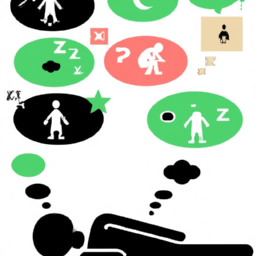
 Dream Meaning4 weeks ago
Dream Meaning4 weeks agoWhat Symbolizes Dreams
-

 Dream Meaning1 month ago
Dream Meaning1 month agoWhat Do Sexual Dreams Mean
-

 Dream Meaning1 month ago
Dream Meaning1 month agoHow To Stop Wet Dreams As A Christian
-
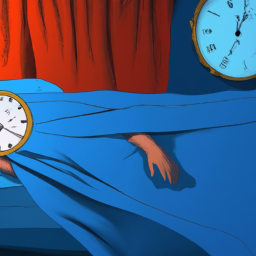
 Dream Meaning1 month ago
Dream Meaning1 month agoWhy Do Dreams Feel So Long














